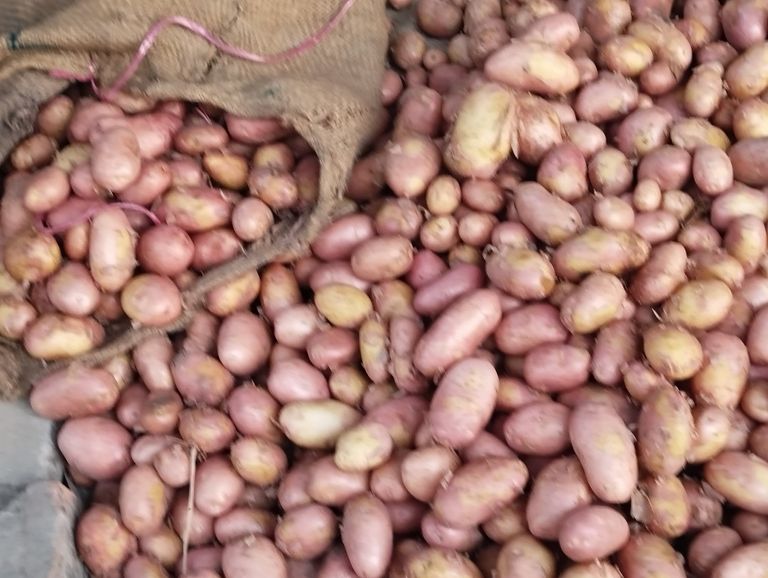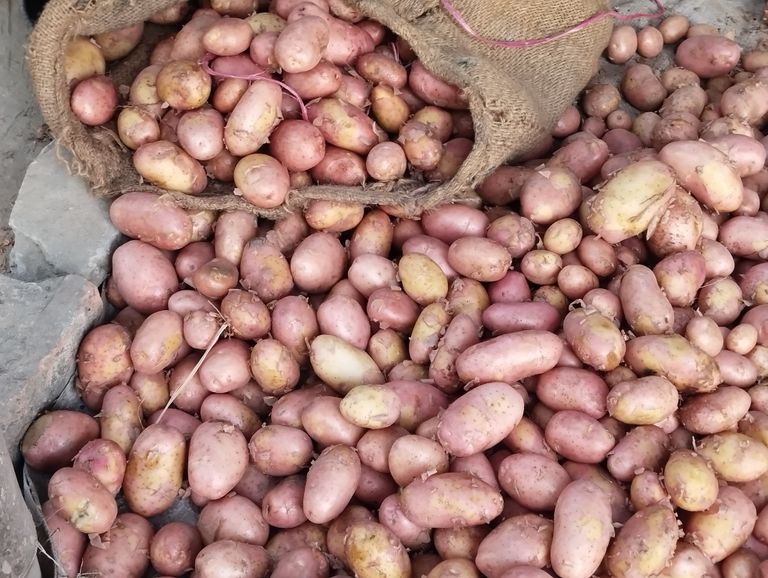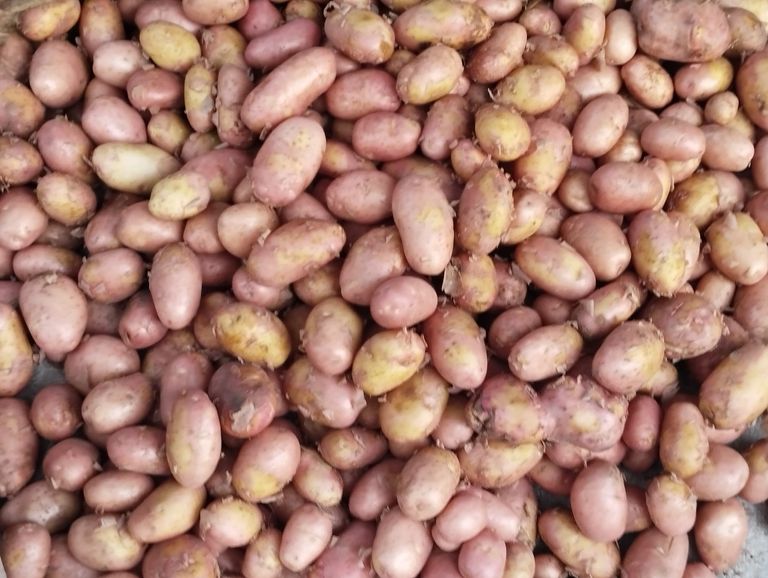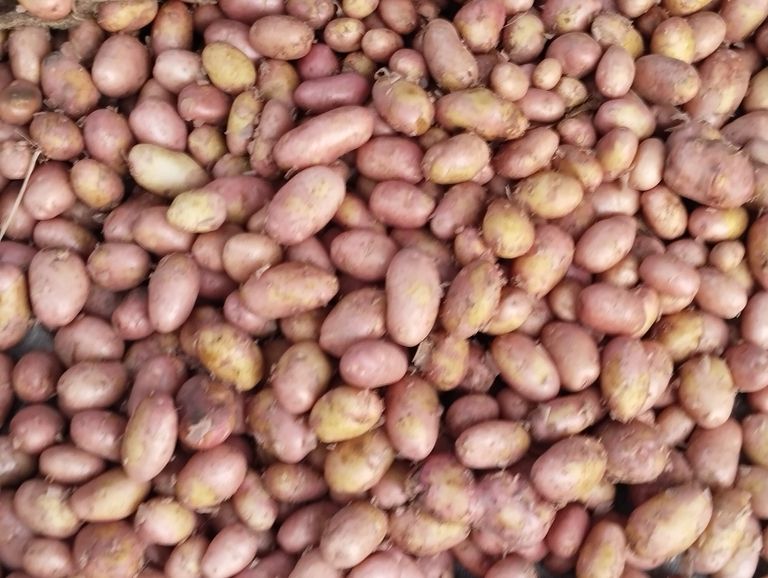
How to Start a Profitable Potato Business A Complete Guide.
Potatoes are one of the most consumed vegetables worldwide, making the potato business a highly profitable venture. Whether you are a farmer, wholesaler, or retailer, entering the potato market can be a great way to generate income. In this guide, we will cover everything you need to know about starting and running a successful potato business.
- Understanding the Potato Market
Before starting a potato business, it is crucial to analyze the market demand, supply trends, and pricing. Potatoes are used in households, restaurants, fast food chains, and food processing industries. Understanding your target customers will help you determine the right business model.
Types of Potatoes and Their Demand
There are different varieties of potatoes, including:
Russet Potatoes – Commonly used for French fries and baking.
Red Potatoes – Preferred for salads and boiling.
Yellow Potatoes – Used for roasting and mashing.
White Potatoes – Popular in home cooking.
Sweet Potatoes – High in demand for health-conscious consumers.
Choose a variety based on market demand and profitability.
- Choosing the Right Potato Business Model
There are several ways to enter the potato business. You can choose from:
a) Potato Farming
Growing potatoes can be a profitable venture if you have land and access to good-quality seeds. Key steps include:
Selecting high-yield potato varieties.
Preparing the soil with proper fertilization.
Irrigating and protecting the crops from pests and diseases.
Harvesting and storing the potatoes correctly to prevent spoilage.
b) Wholesale Potato Business
If you don’t want to farm, you can buy potatoes in bulk from farmers and supply them to retailers, restaurants, or food processing companies. This requires:
Building relationships with farmers.
Investing in proper storage facilities.
Understanding transportation and logistics.
c) Potato Retail Business
Retailing potatoes in markets, grocery stores, or online platforms can be a good way to earn steady profits. You can:
Set up a shop in a busy market.
Supply potatoes to supermarkets.
Sell online through e-commerce platforms.
d) Potato Processing Business
Processing potatoes into products like chips, French fries, mashed potatoes, or frozen items can be highly profitable. This requires:
Investing in food processing machinery.
Ensuring quality packaging and branding.
Meeting food safety and licensing requirements.
- Setting Up Your Potato Business
Once you choose your business model, follow these steps to get started:
a) Business Registration and Licensing
Register your business with the local authorities and obtain necessary licenses to operate legally.
b) Sourcing Quality Potatoes
If you are a wholesaler or retailer, ensure that you buy fresh and high-quality potatoes from reliable sources.
c) Storage and Transportation
Proper storage prevents spoilage and increases profitability. Invest in:
Cold storage facilities to maintain freshness.
Good transportation networks to ensure timely delivery.
d) Marketing and Sales Strategy
To attract customers, use the following marketing strategies:
Social Media Marketing – Promote your business on Facebook, Instagram, and WhatsApp.
Local Advertising – Use posters, banners, and word-of-mouth marketing.
B2B Networking – Partner with restaurants, hotels, and grocery stores.
- Profitability and Cost Analysis
The profitability of the potato business depends on factors like production costs, transportation, and selling price.
Estimated Costs
Potato Farming Costs – Land, seeds, fertilizers, labor, irrigation.
Wholesale Business Costs – Buying in bulk, transportation, storage.
Retail Business Costs – Renting a shop, packaging, marketing.
Processing Business Costs – Machinery, raw materials, branding.
Profit Margins
Farmers can earn 30%-50% profit per harvest.
Wholesalers can make 10%-20% profit per bulk sale.
Retailers can earn 20%-40% profit per kilogram sold.
Processed potato businesses can have 50%-100% profit depending on branding.
- Challenges in the Potato Business and How to Overcome Them
a) Seasonal Price Fluctuations
Solution: Store potatoes in cold storage and sell when prices rise.
b) Pest and Disease Issues
Solution: Use disease-resistant seeds and proper pest management techniques.
c) Competition
Solution: Differentiate your business through quality, branding, and customer service.
The potato business is a lucrative opportunity with various income streams. Whether you choose farming, wholesaling, retailing, or processing, proper planning and market research are key to success. By implementing effective strategies and maintaining quality, you can build a profitable and sustainable potato business.

Decay in Light: How Light Affects the Breakdown of Materials
Light is often associated with growth, energy, and vitality. However, prolonged exposure to light can also cause decay, deterioration, and decomposition in various materials. This phenomenon, known as photodegradation, affects everything from organic matter to synthetic materials. In this blog, we will explore how light contributes to decay, the science behind it, and how we can prevent or slow down the process.
Understanding Photodegradation
Photodegradation is the process by which materials break down due to exposure to light, especially ultraviolet (UV) radiation. This process occurs because light energy can break molecular bonds, leading to changes in the chemical composition of a substance. Photodegradation is particularly significant in materials such as plastics, textiles, paper, and biological tissues.
The Science Behind Light-Induced Decay
When light, especially UV light, strikes an object, the high-energy photons interact with the molecules of the material. This can cause:
- Bond Breaking: The energy from UV rays can break molecular bonds, leading to fragmentation and structural weakening.
- Oxidation: UV exposure often leads to oxidation, a reaction with oxygen that can cause discoloration, brittleness, and eventual breakdown.
- Photo-bleaching: Some materials, like dyes and pigments, fade when exposed to light, leading to color loss over time.
- Heat Generation: Absorption of light can increase the temperature of a material, accelerating thermal degradation.
Examples of Decay Due to Light Exposure
- Organic Matter and Food
Fruits, vegetables, and other organic matter decay faster when exposed to light. UV radiation can break down cell structures, leading to loss of moisture, discoloration, and microbial growth. This is why food is often stored in dark containers or opaque packaging.
- Paper and Books
Books and historical documents kept in direct sunlight often show signs of yellowing and brittleness. This happens because light breaks down cellulose fibers in paper, causing it to become fragile and prone to tearing.
- Plastic and Synthetic Materials
Plastic objects left outside for long periods often become brittle and start cracking. This is due to the breakdown of polymer chains caused by UV exposure. Certain additives can slow down this process, but complete prevention is challenging.
- Artwork and Paintings
Paintings and photographs fade over time when exposed to light. This is especially problematic for museum artifacts, where preservation is crucial. Special UV-filtered glass is often used to protect valuable artworks.
- Fabrics and Textiles
Curtains, clothes, and upholstery can lose their color and strength over time when exposed to sunlight. UV rays break down dye molecules, leading to fading, while the heat weakens fabric fibers.
How to Prevent Light-Induced Decay
- Use UV Filters and Protective Coatings
Installing UV-filtering films on windows and using protective coatings on materials can reduce the impact of UV rays.
- Store Items in Dark or Controlled Environments
Keeping delicate materials in dark places or using UV-protected glass can help preserve their integrity.
- Apply Anti-Oxidants and UV Stabilizers
Certain chemicals, such as antioxidants and UV stabilizers, can slow down photodegradation by neutralizing free radicals formed due to light exposure.
- Rotate and Cover Exposed Items
Regularly rotating or covering items like furniture and artworks can reduce the time they spend in direct sunlight, slowing down the process of degradation.
- Use Low-Intensity or Indirect Lighting
For indoor environments, using LED lights instead of direct sunlight or high-intensity bulbs can minimize damage.
Final Thoughts
While light is essential for life, it can also cause significant damage to materials over time. Understanding the science behind photodegradation allows us to take preventive measures to protect valuable objects, food, and artifacts from decay. By using UV protection, storing materials properly, and choosing appropriate lighting, we can extend the lifespan of various materials and reduce the effects of light-induced decay. Would you like to explore specific preventive measures for different materials? Let us know in the comments.

Proper Cultivation of Potatoes: A Comprehensive Guide
Potatoes (Solanum tuberosum) are one of the world's most important food crops, providing essential nutrients and carbohydrates. They grow in various climates, making them a popular choice for farmers worldwide. Successful potato cultivation requires proper soil preparation, seed selection, irrigation, pest control, and harvesting techniques. This guide covers all essential aspects of potato farming to help you achieve a high yield.
- Selecting the Right Variety
Choosing the right potato variety is crucial for a successful harvest. There are three main types of potatoes based on their use:
Early-season varieties – Mature in 60–80 days (e.g., Red Norland, Yukon Gold)
Mid-season varieties – Take 80–100 days to mature (e.g., Kennebec, Purple Majesty)
Late-season varieties – Require 100–130 days (e.g., Russet Burbank, Katahdin)
Select varieties based on climate, soil type, and intended use (boiling, frying, or storage).
- Climate and Soil Requirements
Climate Conditions
Potatoes grow best in cool temperatures (15–20°C or 59–68°F).
Avoid extreme heat or frost, as these can affect tuber formation.
They require 6–8 hours of direct sunlight daily.
Soil Preparation
Potatoes thrive in loose, well-drained, sandy loam soil with good aeration.
The ideal soil pH is 5.0–6.5.
Before planting, perform soil testing to check for nutrient levels.
Apply organic matter (compost or well-rotted manure) to enrich the soil.
- Preparing and Planting Seed Potatoes
Selecting Seed Potatoes
Always use certified disease-free seed potatoes.
Avoid grocery store potatoes, as they may be treated with growth inhibitors.
Chitting (pre-sprouting) can speed up growth. Place seed potatoes in a well-lit, cool space for 2–3 weeks before planting.
Planting Method
- Cutting – Cut larger seed potatoes into 1–2-inch pieces, each containing at least one “eye.”
- Drying – Allow cut pieces to dry for 1–2 days to prevent rotting.
- Spacing – Plant 10–12 inches apart in rows 24–36 inches apart.
- Depth – Place 2–4 inches deep in loose soil.
- Watering and Fertilization
Irrigation
Potatoes need consistent moisture but cannot tolerate waterlogging.
Water 1–2 inches per week, especially during tuber formation.
Use drip irrigation for better moisture control.
Fertilization
Apply balanced fertilizers (10-20-20 NPK) before planting.
Side-dress with nitrogen fertilizer when plants reach 6–8 inches in height.
Avoid excessive nitrogen, which promotes leaf growth over tubers.
- Weed, Pest, and Disease Management
Weed Control
Use mulching (straw or plastic) to reduce weeds and maintain soil moisture.
Hand weeding is effective but must be done carefully to avoid disturbing roots.
Common Pests
Potato beetles – Handpick or use neem oil/insecticides.
Aphids – Introduce natural predators like ladybugs.
Wireworms – Rotate crops to reduce infestations.
Common Diseases
Late blight (fungal disease) – Use resistant varieties and fungicides.
Scab – Maintain soil pH below 5.5 and avoid alkaline fertilizers.
Blackleg – Improve drainage and use disease-free seeds.
- Hilling and Staking
Hilling Process
When plants are 6–8 inches tall, mound soil around their bases.
Repeat every 2–3 weeks, keeping tubers covered to prevent greening.
This improves yield and prevents sun exposure.
- Harvesting and Storage
When to Harvest
Early varieties – Ready in 60–80 days when flowers bloom.
Main crop – Wait until leaves turn yellow and die back (100–130 days).
Curing – Dry harvested potatoes in a cool, dark place for 10–14 days to toughen skins.
Storage Conditions
Store in cool (4–7°C or 40–45°F), dark, humid conditions.
Avoid storing with onions or apples, as they release gases that cause sprouting.
Use ventilated containers like mesh bags or wooden crates.
- Common Mistakes to Avoid
Planting in compacted or waterlogged soil
Overwatering or underwatering
Skipping crop rotation (increases disease risks)
Harvesting too early or too late.
Growing potatoes successfully requires attention to detail at every stage—from selecting the right variety to proper soil preparation, planting, irrigation, pest control, and harvesting. By following these best practices, you can ensure a healthy, high-yield potato crop. Whether you're a home gardener or a commercial farmer, careful planning and execution will lead to a bountiful harvest.

Delicious Potato Recipes: Easy and Tasty Ways to Cook Potatoes
Potatoes are one of the most versatile vegetables, enjoyed in cuisines around the world. Whether mashed, fried, roasted, or curried, potatoes can be turned into delicious dishes with minimal effort. In this blog, we’ll explore different methods of cooking potatoes, along with some easy and tasty recipes you can try at home.
Why Are Potatoes So Popular?
Potatoes are a staple food in many households for several reasons:
Affordable: Potatoes are inexpensive and widely available.
Nutritious: They are rich in vitamins C and B6, potassium, and fiber.
Versatile: You can cook them in many ways—boiling, frying, baking, or roasting.
Filling: Potatoes are a great source of carbohydrates, providing energy and keeping you full.
Now, let’s dive into some mouthwatering potato recipes!
- Classic Mashed Potatoes
Mashed potatoes are a comforting side dish that pairs well with many meals.
Ingredients:
4 large potatoes
2 tablespoons butter
½ cup milk
Salt and pepper to taste
(Optional) Garlic powder, cheese, or fresh herbs for extra flavor
Instructions:
- Peel and cut the potatoes into chunks.
- Boil them in salted water for about 15–20 minutes or until they are soft.
- Drain and mash the potatoes while still hot.
- Add butter, milk, salt, and pepper. Mix well until smooth.
- Serve warm with your favorite dishes.
- Crispy Roasted Potatoes
If you love crispy, golden potatoes, this recipe is for you!
Ingredients:
4 medium potatoes, cut into small cubes
2 tablespoons olive oil
1 teaspoon salt
½ teaspoon black pepper
½ teaspoon paprika
½ teaspoon garlic powder
(Optional) Fresh rosemary or thyme for extra flavor
Instructions:
- Preheat the oven to 220°C (425°F).
- In a bowl, toss the potatoes with olive oil and seasonings.
- Spread them evenly on a baking tray.
- Bake for 30–35 minutes, flipping halfway through for even crispiness.
- Serve hot with a dip or as a side dish.
- Spicy Indian-Style Potato Curry
A flavorful and aromatic potato curry that goes well with rice or bread.
Ingredients:
4 medium potatoes, peeled and cubed
2 tablespoons oil
1 onion, finely chopped
2 tomatoes, chopped
1 teaspoon cumin seeds
1 teaspoon turmeric powder
1 teaspoon red chili powder (adjust to taste)
1 teaspoon garam masala
½ teaspoon salt
½ cup water
Fresh coriander for garnish
Instructions:
- Heat oil in a pan and add cumin seeds.
- Add chopped onions and sauté until golden.
- Add tomatoes and cook until soft.
- Stir in turmeric, chili powder, garam masala, and salt.
- Add potatoes and mix well. Pour in water, cover, and cook for 15–20 minutes until the potatoes are tender.